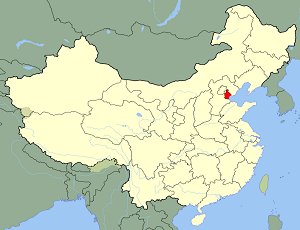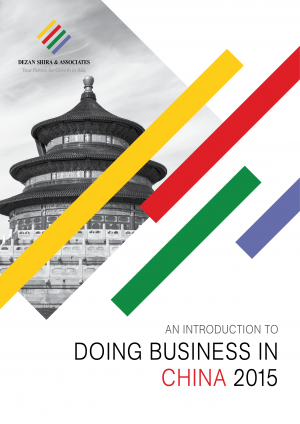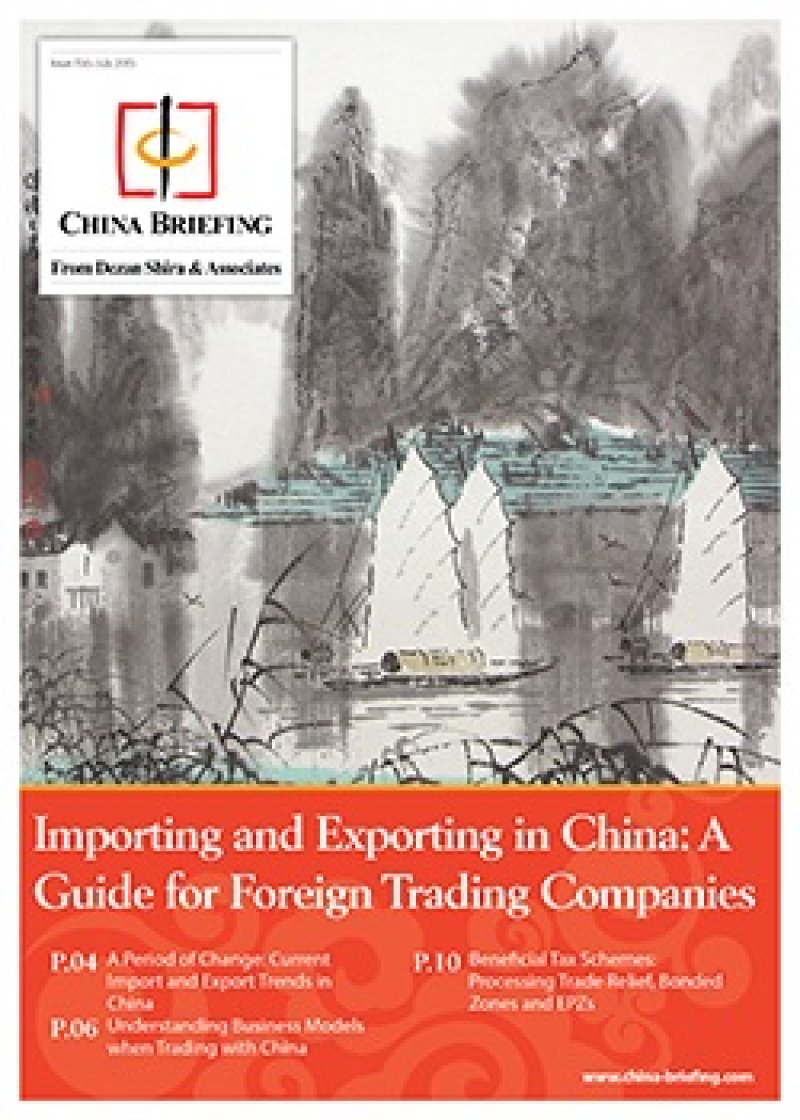Tianjin: China’s High-tech Manufacturing and Logistics Hub
 By Dezan Shira & Associates
By Dezan Shira & Associates
Editor: Nathan Wakelin-King
Tianjin’s status as Northern China’s most prominent port city has put in on the proverbial map, but it has also caused some to overlook or underestimate it. Tianjin is sometimes viewed as something of a “gateway to Beijing”, and the other merits of the city are thus ignored.
Tianjin’s logistical capabilities and proximity to Beijing are indeed important, but Tianjin is also an excellent potential investment destination in its own right. The city has a large and growing population of nearly 15.2 million, and an economy that has consistently been growing at a faster pace than the rest of China. Tianjin is also home to numerous development zones, R&D centers, industrial parks, and the recently set up the Tianjin Free Trade Zone.
Economic Overview
In recent years, Tianjin’s economy has grown at a faster pace than the Chinese national average.
In 2014, the Tianjin economy grew by 10 percent. This is a lower growth rate than previous years (for example, 17.4 percent in 2010), but it is still high in absolute terms and high in comparison to much of the rest of China.
Broken up by sector, in 2014 the primary sector grew by 2.8 percent, the secondary sector by 9.9 percent,and the tertiary sector by 10.2 percent. Using 2014 figures, the primary, secondary and tertiary sectors make up 1.3 percent, 49.4 percent, and 49.3 percent respectively as a proportion of the total economy.
Retail sales of consumer goods grew by 10.7 percent on a year-on-year basis in 2015, indicating a robust consumer market.
Tianjin is therefore following the main trends of the wider Chinese economy (slowing growth, an emerging service sector), but it is set to maintain a nonetheless high level of growth, in conjunction with a large population and growing consumption.
![]() RELATED: Business Advisory Services from Dezan Shira & Associates
RELATED: Business Advisory Services from Dezan Shira & Associates
The Tianjin Free Trade Zone
The Tianjin Free Trade Zone, set up earlier this year, will be an influential in Tianjin’s development. Businesses in one of China’s FTZs benefit from an expanded “negative list” of investment areas and less red tape when it comes to customs and registration.
Tianjin’s Free Trade Zone in fact comprises three geographical parts of Tianjin, each with their own prescribed set of industries and aims:
- The Tianjin Port Dongjiang Area (天津港东疆片区), specializing in modern service industries such as sea transport and logistics, international trade, and financial leasing
- The Tianjin Airport Area (天津机场片区), focusing on high end manufacturing (aerospace technology, equipment manufacturing), and new information technology and producer services
- Binhai New Area (滨海新区中心商务区), specializing mainly in finance and banking
The FTZ policies are likely to change over time, so this is an area worth watching closely for new developments.
Beijing-Tianjin-Hebei Coordinated Development
This is a set of coordinated development policies for its namesake region. Part of the aim is to promote development in the wider Hebei region, rather than the already crowded cities of Tianjin and Beijing.
Tianjin was always an important transport hub for China’s economy, but this policy will make this role even more prominent. Part of the policy is the Integration of Customs clearance between Beijing, Tianjin, and Hebei, as well as a program of improving transport in the wider Hebei area connecting to Tianjin. Ultimately, goods produced in (or delivered to) Tianjin will be much more easily distributable to other parts of China.
Additionally, it implies further government spending on infrastructure in the area (with the flow-on economic benefits to the local economy that this might bring).
Development Zones
As the spearhead of numerous development initiatives over the years, Tianjin is home to many industrial parks, development zones, and other varieties of policy-driven industrial clusters. Some of these include:
- The Tianjin Economic-Technological Development Area (TEDA) – Tianjin’s longest running industrial zone, existing since 1984. It hosts investments from companies such as Motorola, Toyota, and Samsung. Major industries include automobiles, telecommunication and pharmaceuticals
- The Tianjin Dongli Economic Development Area – Prominent industries include auto parts, chemicals, and machinery
- The Tianjin Binhai Hi-Tech Industrial Development Area – Prominent industries include information technology, manufacturing, and green energy
- Tianjin Ninghe Economic Development Area – Prominent in metallurgy and machinery
Overall, there are 25 such industrial parks or development zones in Tianjin. In terms of benefits for foreign investors, any tax benefits or other advantages will differ according to the area. In general, however, the importance of these areas lies in their respective geographic locations and potential economic clusters.
Tianjin’s advantages as an investment destination relate to a combination of its natural geographic location, large population, and its status as a focus point of some of China’s flagship development policies. Its port location and proximity to Beijing combine to make it an excellent transport and shipping hub. Tianjin’s logistics capacity is then complimented by its preexisting manufacturing and technological strengths, and the new Free Trade Zone will add some more scope for foreign investment.
|
Asia Briefing Ltd. is a subsidiary of Dezan Shira & Associates. Dezan Shira is a specialist foreign direct investment practice, providing corporate establishment, business advisory, tax advisory and compliance, accounting, payroll, due diligence and financial review services to multinationals investing in China, Hong Kong, India, Vietnam, Singapore and the rest of ASEAN. For further information, please email china@dezshira.com or visit www.dezshira.com. Stay up to date with the latest business and investment trends in Asia by subscribing to our complimentary update service featuring news, commentary and regulatory insight. |
![]()
 An Introduction to Doing Business in China 2015
An Introduction to Doing Business in China 2015
Doing Business in China 2015 is designed to introduce the fundamentals of investing in China. Compiled by the professionals at Dezan Shira & Associates, this comprehensive guide is ideal not only for businesses looking to enter the Chinese market, but also for companies that already have a presence here and want to keep up-to-date with the most recent and relevant policy changes.
Importing and Exporting in China: a Guide for Trading Companies
In this issue of China Briefing, we discuss the latest import and export trends in China, and analyze the ways in which a foreign company in China can properly prepare for the import/export process. With import taxes and duties adding a significant cost burden, we explain how this system works in China, and highlight some of the tax incentives that the Chinese government has put in place to help stimulate trade.
 Adapting Your China WFOE to Service China’s Consumers
Adapting Your China WFOE to Service China’s Consumers
In this issue of China Briefing Magazine, we look at the challenges posed to manufacturers amidst China’s rising labor costs and stricter environmental regulations. Manufacturing WFOEs in China should adapt by expanding their business scope to include distribution and determine suitable supply chain solutions. In this regard, we will take a look at the opportunities in China’s domestic consumer market and forecast the sectors that are set to boom in the coming years.
- Previous Article Andrew Polk’s 2016 China Economic Forecast – Weaker Growth and More Volatility to Come
- Next Article China Outbound: Forecasts for 2016, Transfer Pricing Rules in ASEAN Nations










